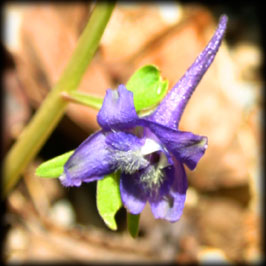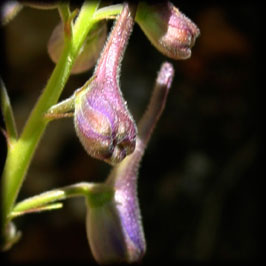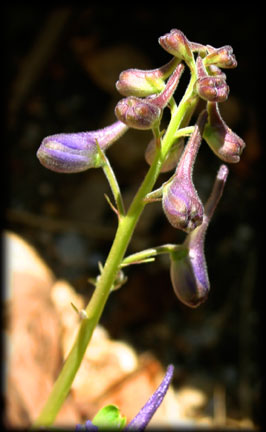Spring Larkspur
by Joshua Heston
Larkspur flowers are graceful.
Modern hybrids even more so, as they are bred for extraordinary blossoms.
And the flower buds are particularly interesting, closely resembling tadpoles — or oddly-shaped shoes.
Nonetheless, care should be taken. All parts of the larkspur are toxic.
Of the three main species of Delphinium which grow wild in North America, only Delphinium virescens is commonly native to the Ozarks.
Spring Larkspur (Delphinium viriscens)
Size: 6 to 36 inches tall; flowers 11 to 1/2 inches long. What to look for: flowers purple or blue (rarely white), loosely clustered along upper part of wandlike stem; leaves divided, scattered on stem. Habitat: rich woods, clearings. In bloom: April to May.
— page 346, Wernett, Susan J., et al. North American Wildlife. The Reader's Digest Association, Inc., 1986.
From The Herbal Compendium:
Larkspur. Consolida regalis (Delphinium consolida). Stave's Acre.
Herb: Emetic. Cathartic. Diuretic. Narcotic. Acrid.
Seed: Diuretic. Narcotic. Acrid.
Used externally as an ointment in cutaneous diseases and to destroy insects on the body, such as lice.
—page 158, Shaker Medicinal Herbs: A Compendium of History, Lore and Uses by Amy Bess Miller
A word of safety: folk remedies on StateoftheOzarks are published for informational purposes only. These remedies are never intended to cure, treat or mitigate any disease or disease condition. For questions about disease or disease conditions, consult a qualified healthcare professional.

Plate 1.

Plate 2.

Plate 3.



